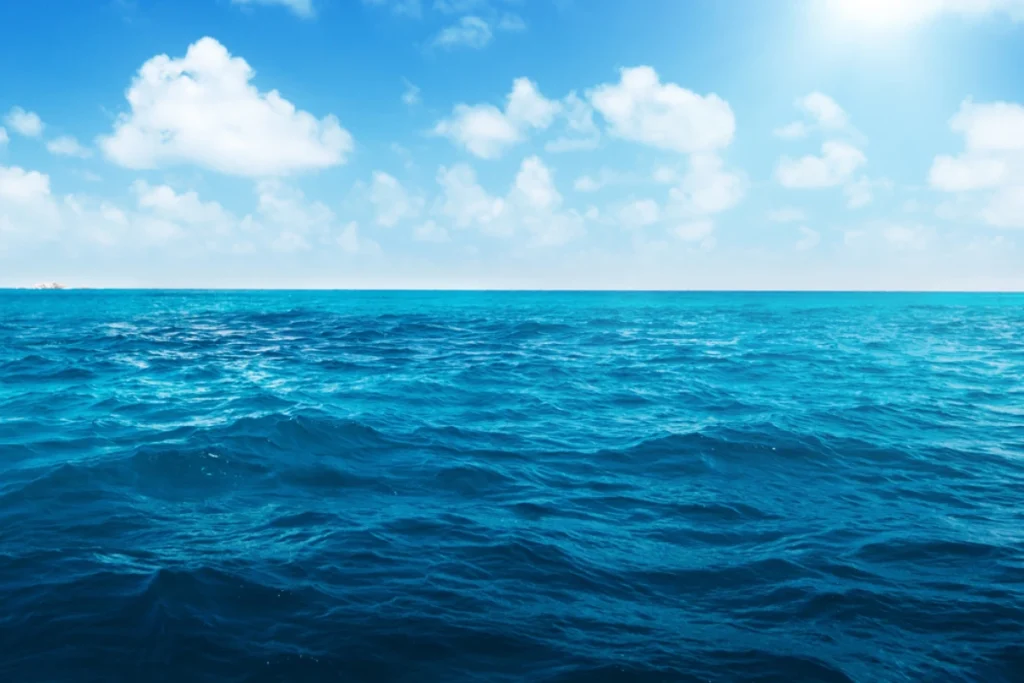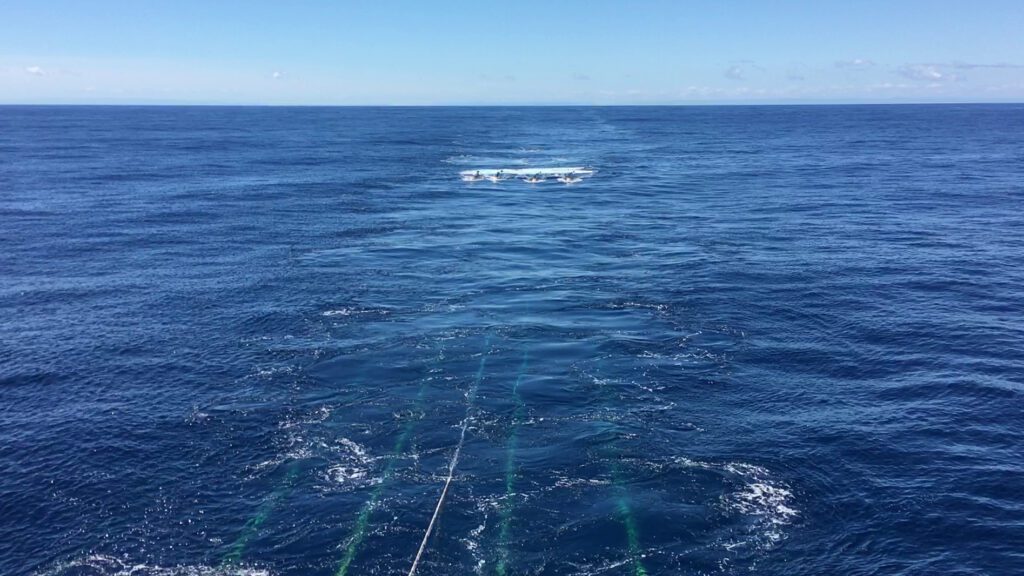Scientists have recently made a groundbreaking discovery of massive freshwater reserves under the ocean floor. These hidden aquifers could potentially transform the way humanity approaches water scarcity. The discovery shows that vast amounts of freshwater are stored beneath the seabed, far beyond what anyone previously imagined. This remarkable find has captured the attention of researchers, governments, and environmentalists worldwide, offering hope for regions struggling with drought and limited water resources.
The Discovery That Changed Everything
The journey to uncover freshwater reserves under the ocean floor began with specialized deep sea exploration missions. Using advanced drilling technology and mapping techniques, scientists probed the ocean floor along continental shelves. They found large pockets of freshwater trapped beneath layers of sand, clay, and rock.
These reservoirs were located at depths ranging from hundreds to over a thousand feet beneath the seabed. The water in these reserves was surprisingly fresh, with very low salinity levels. In many areas, it could be suitable for human consumption with minimal treatment. Scientists estimate that the size and volume of these aquifers are enormous, potentially enough to supply freshwater to millions of people for decades if not centuries.

This discovery highlights a previously unknown aspect of Earth’s water cycle and suggests that the oceans might hold vast untapped reserves of freshwater hidden right beneath our feet.
How Did Freshwater End Up Beneath the Ocean?
The presence of freshwater beneath the ocean floor might seem surprising at first. How could freshwater exist below saltwater? Scientists have proposed several explanations.

One theory points to the last Ice Age thousands of years ago. During that time, glaciers covered large portions of land, and as they melted, massive amounts of freshwater flowed into the ground. Some of this water became trapped beneath layers of sediment that formed over time, creating isolated underground aquifers.
Another explanation is that these subseafloor aquifers are continuously replenished by groundwater from nearby land areas. Rainwater and river water seep into the soil, traveling through porous rock layers until it reaches these trapped pockets beneath the ocean. Over millennia, these aquifers slowly accumulated more freshwater, creating enormous underground reservoirs.
The Scale of These Freshwater Reserves
The newly discovered freshwater reserves under the ocean floor are staggering in scale. In some areas, the aquifers stretch for miles beneath the seabed, forming vast networks of underground water channels. Preliminary estimates suggest that these reservoirs could hold enough water to supply entire cities or even regions for decades.
For countries facing severe water shortages, this discovery could be a game changer. Accessing even a fraction of these reserves could provide a reliable and sustainable source of freshwater. In a world where droughts are becoming increasingly common and climate change continues to impact water availability, these hidden aquifers offer a glimmer of hope.

Potential Benefits of Utilizing Subsea Freshwater
The implications of tapping into freshwater reserves under the ocean floor are immense. First and foremost, it could help solve the global water crisis. Many parts of the world are facing extreme water shortages, with millions of people lacking access to clean drinking water. Subsea aquifers could provide a supplemental source of water for domestic, agricultural, and industrial use.
In addition, these reserves could help reduce the pressure on traditional freshwater sources such as rivers, lakes, and groundwater wells. By diversifying water sources, communities can better withstand droughts and climate induced water scarcity.
Furthermore, tapping into these aquifers could reduce conflicts over freshwater resources. Water scarcity often leads to disputes between regions and countries. Having an alternative source of water beneath the ocean could ease tensions and provide a more stable solution for shared water needs.
Challenges in Accessing Oceanic Freshwater
While the discovery of freshwater reserves under the ocean floor is exciting, accessing these resources presents significant challenges. Extracting water from deep beneath the seabed is not easy. It requires specialized drilling equipment and technology capable of safely reaching the aquifers without contaminating the water or damaging marine ecosystems.
Environmental concerns are also critical. Disturbing the seabed could affect marine life and ecosystems that depend on stable ocean conditions. Careful planning and sustainable methods would be essential to ensure minimal environmental impact.
Legal and regulatory hurdles are another challenge. Many of these freshwater reserves are located in international waters where ownership and usage rights are not clearly defined. Governments and international organizations would need to establish clear guidelines and agreements for the responsible use of these resources.
How Freshwater Beneath the Ocean Could Be Used
If properly accessed, subseafloor freshwater could have a wide range of applications.
- Drinking water supply: Coastal cities and islands struggling with freshwater shortages could benefit directly from these aquifers.
- Agricultural use: Farming requires vast amounts of water, and subseafloor freshwater could provide a reliable irrigation source, especially in arid regions.
- Industrial use: Many industries, such as manufacturing and energy production, require large volumes of water. Oceanic freshwater reserves could help meet these demands without depleting traditional sources.
- Emergency water supply: In the event of droughts or natural disasters, subseafloor freshwater could serve as a backup supply, preventing crises in vulnerable regions.

The Future of Subsea Freshwater Research
The discovery of freshwater reserves under the ocean floor marks just the beginning of a new era in water research. Scientists are eager to explore these aquifers further to understand their size, quality, and sustainability.
Key areas of ongoing research include:
- Water age and replenishment: Determining how old the water is and how quickly the aquifers are naturally replenished.
- Water quality testing: Ensuring the water is free from harmful contaminants and safe for human use.
- Environmental studies: Assessing the impact of extracting water on marine ecosystems and seabed stability.
- Technological development: Creating safe and efficient methods for accessing and transporting subseafloor freshwater to land.
A Global Perspective on Freshwater Security
Freshwater scarcity is a growing global concern. Millions of people around the world lack access to clean drinking water, and climate change is intensifying droughts and reducing water availability in many regions. The discovery of freshwater reserves under the ocean floor could help mitigate some of these challenges.
Countries with limited freshwater sources could benefit significantly by investing in subseafloor aquifer research and infrastructure. At the same time, international cooperation will be critical to ensure that these resources are used responsibly and sustainably.
By combining technological innovation, careful environmental management, and legal frameworks, humanity could unlock a new era of freshwater security, with subseafloor aquifers playing a key role in meeting future water demands.
Conclusion
The discovery of freshwater reserves under the ocean floor represents one of the most promising scientific breakthroughs in recent history. These hidden reservoirs offer hope for millions of people facing water shortages and could provide a sustainable solution for global water security.
While challenges remain in accessing and utilizing these aquifers, the potential benefits are enormous. With continued research, innovation, and international collaboration, subseafloor freshwater could become a vital resource for the future, helping communities thrive in a world where clean water is increasingly precious.
The oceans may hold more than just saltwater. They could be home to some of the largest untapped freshwater supplies on the planet, waiting to support life and growth for generations to come
Do follow UAE Stories on Instagram
Read Next – Extreme Heat Days in Major Cities Are Rising Alarmingly















